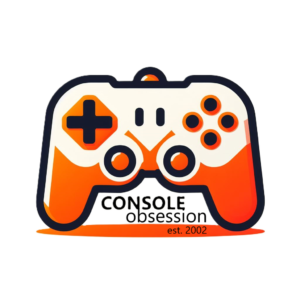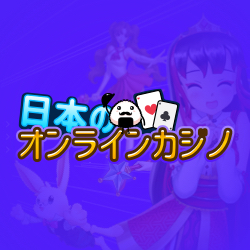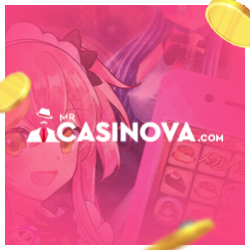Capcom Puzzle World PSP Review
Retro collections are automatically wonderful things because they allow us to draw one, rather obvious conclusion about gaming as a whole: if there are old games, there are old gamers; this isn’t simply an infantile fad riding the wave of a single generation, but a well-established pursuit with footholds in every demographic. Video gaming has come of age. We’re all doing it, from paperboys to US Senators, from the 13-year-old l33tgam3rs who keep Bungie in business to the ageing Micro-jockeys who think an Xbox is something you tick when you fill in your tax returns, presumably even now firing up their email clients to protest that gaming really came of age with the shift from carts to optical media, or when Atari brought Space Invaders to the living room, or at some other key moment affectedly referred to here because the writer is a member of that in-between generation of insecure intellectual types, and is trying to disguise the pitiful extent of his knowledge (and look, now he’s being all ironic about it). Once the preserve of a techno-literate minority, the industry has crashed and arisen from its own ashes twice, dwindled away to nothing in the US only to explode once more with the arrival of the SNES, outlived around a hundred different breeds of console and exactly three point four squillion games, and in the space of thirty years amassed itself a global revenue to rival the film biz, and a market base as heterogeneous as the Canterbury Tales.
Retro collections are a symptom of the industry’s success, and should be praised for that reason if nothing else. They’re also generally worthwhile experiences because they reacquaint us with the mechanical principles which form the beating heart of video games past and, arguably, once you peel away the gloss and the influence of other mediums, present. Which brings us to the Buster Bros games (known as the Pang series in Japan) included with Capcom Puzzle World. Essentially the same game bar a few graphical tweaks and mode variations in later incarnations, the three titles pit one or two players against an onslaught of balloons in a series of single-screen 2D arenas, each more complex than the last. It’s the sort of timeless, gameplay-focussed design now finding a high-definition echo in the likes of Geometry Wars and LittleBigPlanet: put together a simple environment with a few well-considered play elements- a rudimentary physics system, platforms which can be destroyed, three different kinds of ammo with distinct strengths and weaknesses- stir in a timer, scoring system and clean, colourful graphics (including kitsch picture-postcard backgrounds), simmer for a minute or two, drain and serve.
Super Puzzle Fighter II Turbo is comparatively derivative, but the deepest and most playable title on offer here: a competitive Tetris-variant apparently inspired by another Capcom game, Pnickies, and a dig at Capcom cash cow Street Fighter to boot. The fundamentals won’t raise any eyebrows- rotate pairs of descending gems on a 12-by-6 grid to create chains which can then be detonated with a Crash Gem of the same colour- but there are a couple of neat twists. First of all the computer (or another player) will be trying to empty its own grid in parallel to yours, and any gems eliminated from one will cause Counter Gems to drop into the other. Counter Gems are much harder to destroy and chain, but will become normal gems after a set number of turns. This results in a satisfying tug-of-war progression to every match, with one player surging ahead only to take a beating as the Counter Gems in the other player’s grid become smashable, opening up some truly wicked chaining opportunities. Diamonds, effectively smart-bombs which clear away all the gems of one colour, make an infrequent appearance.
The second twist is largely cosmetic, but fun nonetheless: as you play, a pair of super-deformed Streetfighter and Darkstalker characters will slug it out in the background, translating every eliminated gem into suitably meaty roundhouse kicks, jabs and hadokens. Each character drops Counter Gems in a particular pattern, and more strategic players will want to customise their own patterns in order to turn setbacks to their fullest advantage.
The PSP incarnation of Super Puzzle Fighter includes a couple of remixed modes from the Dreamcast era: Y-mode smashes any gems arranged in columns, rows or diagonals of three or more, while Z-mode plays out a lot like Tetris Attack, with gems rising from the bottom of the grid while the player rotates already established pieces.
Sadly, it’s at this point that the suspiciously ambivalent-sounding phrases ‘generally worthwhile’ and ‘praised for that reason if nothing else’ return to haunt us. It isn’t just that the third game in the collection, Block Block, is an unimpressive Breakout clone (paddle, ball, bricks, need I say any more?) with twitchy controls and a cramped screen ratio. It’s also that it’s the only other game in the collection. Gamers may have been prepared to fork out a week’s wages for Pong back in 1975, but in this age of downloadable extras and hundred-hour RPGs we expect a little more bang for our buck, even at the bargain basement price of £19.99. Delightful as the Buster Bros games and Puzzle Fighter may be, only the latter is chunky enough to see out a week, and comparisons with bulky fellow retro releases Sega Mega Collection or Metal Slug Anthology are far from favourable.
The conversion is at least pretty competent, with a fast-loading front-end, ad-hoc multiplayer and sharable high scores, a few gobbets of unlockable concept art and a nifty option to import your own photos and use them as a background in Buster Bros. On the other hand, Capcom has allowed the collection to ship with some severe stability issues: be warned that you’ll need either firmware 3.40 or (preferably) 3.52 if you want a crash-free experience.
The review now divides on generational bounds. The twenty-something critic in me likes it like a six, and demands that you go invest in one of the many more generous retro anthologies available to handheld gamers (if not a real game i.e. anything post-2005). The nostalgic aesthete (and Puzzle Fighter fanatic) in me won’t go lower than eight: the titles included here have their place in the history of gaming, and to play them is to deepen your appreciation of the medium- did you know that Block Block’s immortal predecessor influenced the design of the Apple II computer? Have you thought about the relationship between Puzzle Fighter and the recent, excellent Puzzle Quest, another genre-hybrid? The teenage graphics whore can’t be arsed with all this, and wants to go surf for Killzone trailers. And the laconic post-grad thinks it’s time for lunch. A nice, inconclusive seven it is then.
7/10







